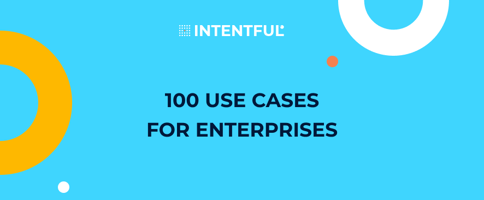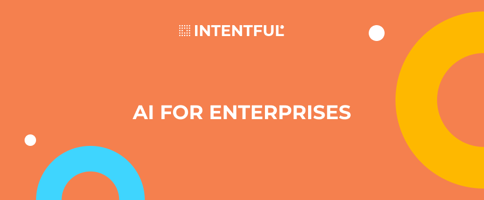Generative AI is taking the world by storm. Never before has the transformation been so fast and so...
Why is Some of the AI Content Biased?
Generative AI is a branch of artificial intelligence specializing in creating new content or patterns by learning from a wealth of existing data it was trained on. It has a wide range of applications across various industries, from crafting content to designing and problem-solving.
Generative AI models focused on text generation, such as GPT, are called Large Language Models (LLMs). They have been trained on a vast amount of texts, including those from various epochs, even dating back centuries. This training data may contain works by influential figures who defended slavery or who held racist views.
As a result, LLMs can inadvertently reproduce biases from these historical sources, which could lead to AI-generated content discriminating against women, people of color, and other marginalized groups. Since AI is being deployed rapidly and on a large scale, addressing and mitigating these biases is crucial to ensure fair and inclusive outcomes.
Possible Types of Biases
This section highlights bias's pervasive and multifaceted nature, emphasizing the importance of recognizing and addressing it. These are just several examples:
- Gender bias that favors one gender over another, perpetuating stereotypes or unequal treatment in AI-generated content. The examples are “he” as a standard third-person pronoun or gender-specific terms for professions like “policeman” (as contrasted with “police officer”).
- Racial bias that can lead to disproportionately favoring or discriminating against individuals of a specific race or ethnicity.
- Socioeconomic bias over- or under-representing certain socioeconomic groups, resulting in a content less effective or fair to those from underprivileged backgrounds.
- Geographic bias when artificial intelligence does not generalize well to some locations or underrepresents the needs and preferences of different populations.
- Cultural bias that may cause AI to prioritize certain cultural norms or values, potentially marginalizing or misrepresenting other cultures.
- Age bias that can lead to content that does not effectively serve or represent the interests of different age groups, particularly senior citizens or the youth.
- Ability bias that ignores the needs and preferences of people with disabilities, resulting in exclusionary or discriminatory texts.
Addressing these and other types of discrimination in training data sets is crucial to developing fair, accurate AI models that represent the perspectives of different populations.
Mitigation Approaches
Currently, a couple of strategies are employed to mitigate biases in texts artificial intelligence creates.
Among them are content filters programmed to identify and flag potentially inappropriate parts of the text. They work by scanning the AI-generated content for specific keywords, phrases, or concepts that may indicate bias. When the filter is triggered, that part of the text can be blocked or flagged for further review, helping prevent the spread of discrimination.
Human review is another crucial strategy. By having people edit and proofread AI-generated content, companies can identify and correct biases that artificial intelligence may have overlooked. This collaboration brings the best of both worlds: AI provides efficiency and speed, and humans bring their critical thinking and nuanced understanding of context to ensure the absence of bias and high quality.
As generative artificial intelligence continues to evolve, it is essential to keep refining these mitigation strategies and develop new ones.
Importance of Addressing Bias
While the general idea of why one must mitigate bias is obvious, let us explore it in more detail. We need to eliminate discrimination to achieve the following:
- Fair representation of all individuals and groups to promote inclusivity and prevent the marginalization of any demographic.
- Ethical decision-making to enable more accurate, inclusive, and fair insights across healthcare, finance, public policy, and many other sectors.
- Preventing the perpetuation of harmful stereotypes to contribute to a more equitable society.
- Building trust among users and fostering confidence in AI-driven solutions to promote their widespread adoption.
- Boosting social responsibility of companies that prioritize addressing biases in their artificial intelligence models. This can enhance their reputation and contribute to sustainable long-term growth.
How Generative AI Learns from Data on the Example of GPT-3
The training process for GPT-3, or the third iteration of the Generative Pre-trained Transformer, consisted of the following steps:
- Data collection: GPT-3 was trained on a diverse range of texts from what’s said to be data on the open internet — about 45 terabytes — including websites, books, articles, and other sources. This large dataset provides a wealth of information for the model to learn from.
- Data preprocessing: This involves cleaning, tokenizing, and formatting it to make it suitable for the training process.
- Model training: GPT-3 utilizes a deep learning architecture called the Transformer, which is particularly well-suited for natural language understanding and generation tasks. It was trained using a large-scale unsupervised learning approach, which means it predicts the next word in a sequence based on the context it has seen so far.
- Fine-tuning: GPT-3 can be fine-tuned on specific tasks and datasets to improve performance and adapt it to various use cases. By adjusting the model's parameters and training it further on task-specific data, GPT-3 can become more specialized in certain applications.
Through this training process, GPT-3 learns to generate human-like text based on the patterns and relationships identified in its training dataset, allowing it to create coherent and contextually relevant content suitable for a wide range of purposes.
Intentful’s DEI Dictionary
Projects like Intentful's DEI (Diversity, Equity, and Inclusion) dictionary are designed to pave the way for a more inclusive and understanding society by addressing various forms of bias. Created collaboratively, the dictionary will be a valuable resource available for free through platforms like Github, making it easily accessible for individuals and companies to integrate it into their workflows.
Intentful welcomes contributions from both individuals and organizations. This open invitation to participate reflects the company’s intention that the dictionary remains a dynamic, evolving resource that reflects the diverse perspectives and experiences of people from all walks of life.
As we strive to create more inclusive and equitable AI technologies, understanding and addressing bias in artificial intelligence content is paramount. At Intentful, we believe everyone's perspective is essential in this ongoing journey, and we welcome any questions or insights you may have.
Please feel free to reach out to us to discuss your thoughts or concerns regarding bias or if you are interested in AI-powered content creation.


